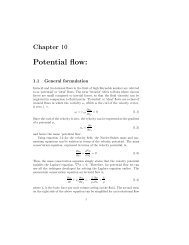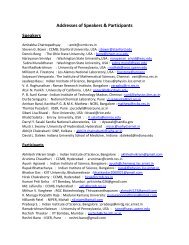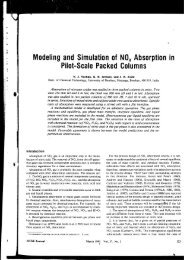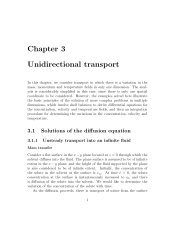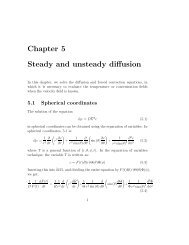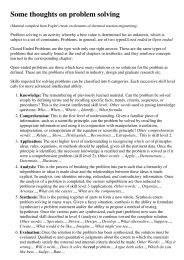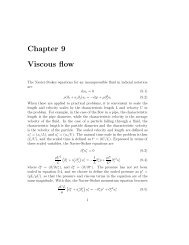Chapter 11 Boundary layer theory
Chapter 11 Boundary layer theory
Chapter 11 Boundary layer theory
Create successful ePaper yourself
Turn your PDF publications into a flip-book with our unique Google optimized e-Paper software.
<strong>11</strong>.2. FALKNER-SKAN SOLUTIONS 15<br />
(d) If the velocity U 1 in the outer flow is a constant, but the velocity<br />
U 3 = U 30 +U 31 x 1 , what is the form of the equation for the velocity<br />
u 3 Is a similarity solution possible<br />
2. Consider the Blasius boundary <strong>layer</strong> flow of a fluid past a flat plate<br />
of length L in the high Reynolds number limit, where x and y are<br />
the streamwise and cross-stream directions respectively. The velocity<br />
profile is given by the Blasius boundary <strong>layer</strong> profile. The temperature<br />
of the fluid at a large distance from the plate is T 0 . For x < 0, the<br />
temperature of the plate is T 0 , while for x > 0, the plate is at a higher<br />
temperature T 1 > T 0 . The equation for the temperature field in the<br />
fluid is:<br />
∂T<br />
∂t + u.∇T = α∇2 T<br />
where u is the fluid velocity. The above equation gives a balance between<br />
the convective and diffusive transport of heat in the fluid.<br />
(a) Scale the coordinates in the temperature equation, and determine<br />
the equivalent Peclet number for this problem.<br />
(b) Assume that the temperature field can be expressed in terms of the<br />
similarity variable using a suitable form, and derive a similarity<br />
equation for the temperature field, which contains the Prandtl<br />
number, the ratio of the Peclet and Reynolds numbers.<br />
(c) If this number is large, one would expect the conduction to be<br />
confined to a thin <strong>layer</strong> near the surface of the plate. Scale the coordinates<br />
in the heat balance equation in this case, and determine<br />
the boundary <strong>layer</strong> thickness as a function of the Prandtl number.<br />
(d) What is the scaling of the flux as a function of the Prandtl and<br />
Reynolds numbers





